Leading fire and building codes have pushed indoor hose installations to the margins, but their use (and potential usefulness) endures
Fire hose reels and fire hose racks are part of certain standpipe and hose systems—but many jurisdictions are phasing them out. Leading fire and building codes from the National Fire Protection Association (NFPA) and the International Code Council (ICC) have gradually minimized the role of “occupant-use” hose in fire safety—and newer editions of these codes grant building owners greater flexibility in removing them from their systems.
In this article, we look at fire hose reels and fire hose racks, explaining their role in standpipe and hose systems, what they’re made of, and why some buildings still have them. We take a look at the International Building Code (IBC) and various NFPA codes to help building owners determine their options for installation, repair, or planned obsolescence.
For additional information on standpipe systems, check out this post at Aaron Johnson’s The Code Coach, a leading resource for codes, standards, and recommended practices in a range of fire protection systems.
If you need to replace or rehabilitate an existing occupant-use hose unit, take a look at our selection of parts and complete units for fire hose racks or reels, fire hose adapters, fire hose valves, fire hose storage, and fire hose nozzles.
Some standpipe and hose systems have long made hoses available to a building’s occupants, but users may not know when to quit a fire
A fire doubles in size every 120 seconds. Or is it every 60 seconds? Every 30? 15?
Depending on the fire and the characteristics of the building, any one of these answers may be right. That’s a problem for firefighters—even with training and experience—but it’s an even bigger problem for a building’s everyday occupants.
In a standpipe system, fire hose racks and fire hose reels allow a building’s occupants to engage in what’s sometimes called “first-aid firefighting.” In the early, or “incipient,” stages of a fire, the surrounding air has plenty of oxygen to feed it. Hot flame and gas mix with cool air, increasing overall temperatures. The fire remains in a small area—with flames lower than ceiling height—and only some smoke is visible.
Left alone, a fire will rapidly progress to the growth stage, where flames may begin to travel across the ceiling. A layer of hot smoke begins to build overhead. And then, with little warning, the fire may become fully developed, with a ballooning rate of heat release and ceiling temperatures approaching or exceeding 1,000 degrees Fahrenheit.
To catch those fires before they enter the growth stage, some standpipe and hose systems feature hose stations. They’re small enough to be handled by people who aren’t expert firefighters and powerful enough to extinguish fires that haven’t yet established a foothold.
Still, these assemblies can’t deliver water quickly enough for full-scale firefighting. And with fire being difficult to predict (and hard to contain), the organizations that develop global fire safety standards have become increasingly uneasy about making fire hose reels and racks available to a building’s occupants.
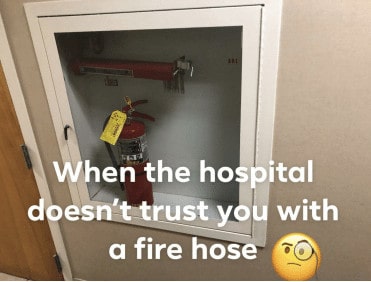
Hose stations for occupant use are found in some Class II and Class III standpipe and hose systems
Not all standpipe systems have fire hose racks (or reels). For guidelines on their installation, fire protection contractors rely on NFPA 14: Standard for the Installation of Standpipe and Hose Systems. This standard divides standpipe systems into three types:
From the 2019 edition of NFPA 14
3.3.22.1 Class I System. A system that provides 2 1/2 in. (65 mm) hose connections to supply water for use by fire departments.
3.3.22.2 Class II System. A system that provides 1 1/2 in. (40 mm) hose stations to supply water for use primarily by trained personnel or by the fire department during initial response.
3.3.22.3 Class III System. A system that provides 1 1/2 in. (40 mm) hose stations to supply water for use by trained personnel and 2 1/2 in. (65 mm) hose connections to supply a larger volume of water for use by fire departments.
Hose connections are valves without the hose attached; hose stations have fully equipped fire hose reels or racks. These descriptions suggest that all Class II and Class III systems feature the latter. However, NFPA 14 later states that a hose connection may replace a hose station in a Class II system. Likewise, a Class III system may omit hose stations if the building has a fire sprinkler system.
From the 2019 edition of NFPA 14
5.3.2 Class II Systems
5.3.2.1 A Class II standpipe system shall provide either 1 1/2 in. (40 mm) hose stations to supply water for use by trained personnel or a hose connection for the fire department during initial response.
5.3.3 Class III Systems
5.3.3.2 Where the building is protected throughout by an approved automatic sprinkler system, Class II hose stations for use by trained personnel shall not be required, subject to the approval of the AHJ, provided that each Class I hose connection is 2 1/2 in. (65 mm) and is equipped with a 2 1/2 in. x 1 1/2 in. (65 mm x 40 mm) reducer and a cap attached with a chain.
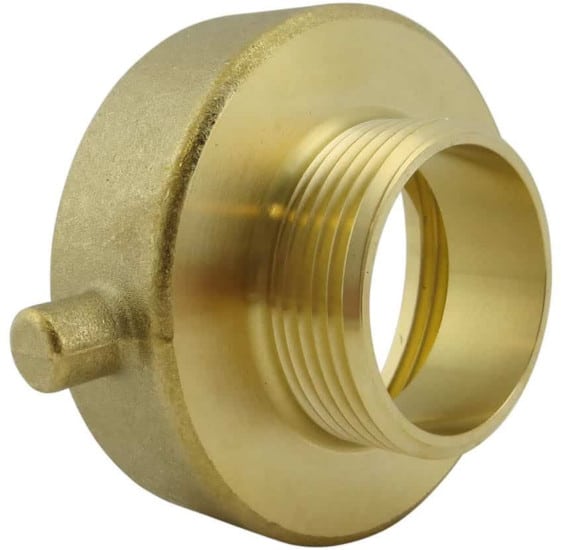
Fire hose reels and racks may be needed in buildings with several stories underground or aboveground, and in other locations specified by building codes
Class III standpipe and hose systems, while common, rarely need hose stations—and Class II systems are nearly nonexistent in the most current building codes
NFPA 14 provides the requirements for standpipe and hose systems—but in most jurisdictions, some version of the ICC’s International Building Code (IBC) dictates which structures require a standpipe system. Tall buildings or buildings with deep basements generally require Class III standpipe systems.
From the 2021 edition of the International Building Code
[F] 905.3.1 Height.
Class III standpipe systems shall be installed throughout buildings where any of the following conditions exist:
1. Four or more stories are above or below grade plane.
2. The floor level of the highest story is located more than 30 feet (9144 mm) above the lowest level of fire department vehicle access.
3. The floor level of the lowest story is located more than 30 feet (9144 mm) below the highest level of fire department vehicle access.
There are some exceptions to this rule. Class I systems—which don’t feature hose stations—may be installed in place of Class III systems when buildings have automatic fire sprinkler systems throughout.
They may also be used in certain buildings or portions of structures that have reduced fire risk or conditions that make installing water-filled pipes impractical. And, as we mentioned in the prior section, Class III systems with an NFPA-compliant fire sprinkler system may eliminate their hose stations if they put a cap and chain, along with a reducer, in its place.
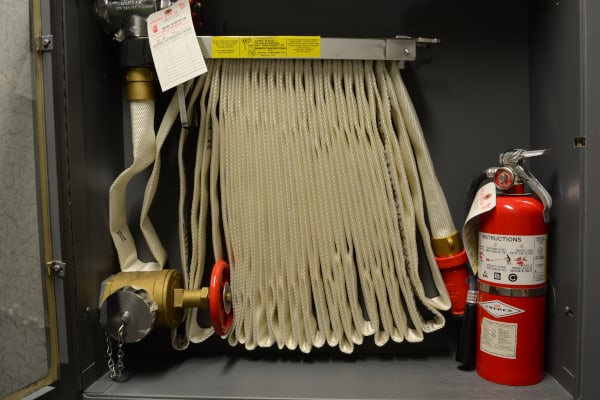
No new building under the 2015, 2018, or 2021 editions of the IBC needs a Class II standpipe system. Section 905.5 of the 2015 edition calls for 1 1/2” hoses for unsprinklered stages greater than 1,000 square feet—as part of a Class III system—which is about as close as the IBC gets to requiring a Class II system.
Accessible placement and careful measurement of distances are needed any time a fire hose rack or reel is installed with a Class II or Class III system
In the Fire Protection Handbook, professional engineer David R. Hague writes that standpipe systems with permanent hose stations “should be located in central areas… where they are clearly visible and readily accessible.” Hose stations must be placed between three and five feet above the floor, as measured from the floor to the center of the hose valve (NFPA 14, sections 7.3.1.1 – 7.3.1.1.1).
Section 4.6.2.1 of NFPA 14 restricts the maximum length of the included hose to 100 feet. Working within that limit, designers of Class II systems must provide enough properly placed hose stations to provide full coverage.
From the 2019 edition of NFPA 14
7.3 Locations of Hose Connections.
7.3.3.1 Class II systems shall be provided with 1 1/2 in. (40 mm) hose stations so that all portions of each floor level of the building are within 130 ft (39.7 m) of a hose connection provided with 1 1/2 in. (40 mm) hose or within 120 ft (36.6 m) of a hose connection provided with less than 1 1/2 in. (40 mm) hose.
7.3.3.2 Distances shall be measured along a path of travel originating at the hose connection.
These distances—130 feet for 1 1/2” hose and 120 feet for smaller sizes—account for the reach of the nozzle. They’re measured using the “actual length method,” which considers the reach of the stream as the hose bends around doors, corners, and obstructions. While the hose length provision (100 feet maximum) applies to both Class II and Class III systems, section 7.3.3.1 doesn’t apply to hose stations in Class III systems (7.3.4.1.1).
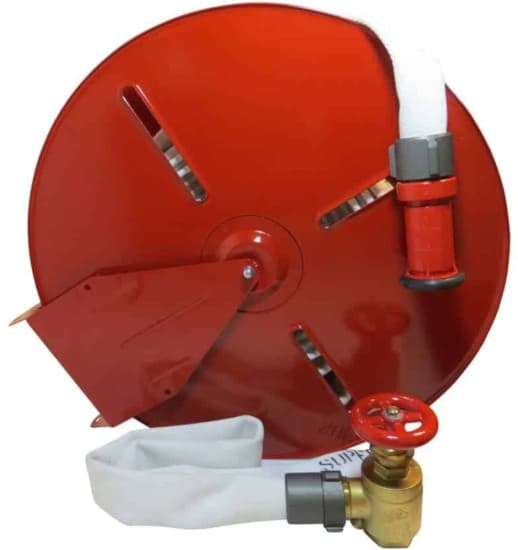
Stations in standpipe and hose systems consist of a few simple components—and a variety of code requirements
Most hose stations installed in accordance with NFPA 14 consist of the following components:
- Closets or cabinets designed to store occupant-use hose, and which clearly indicate its location
- Fire hose racks or reels, which store hoses and allow for quick deployment
- Hose connections (valves), which join the standpipe system to the hose itself
- Fire hoses and hose nozzles used in incipient-stage firefighting
All hose stations include the last three items (the rack/reel, hose connection, and hose/nozzle) by definition. Closets or cabinets, while often provided, aren’t explicitly required.
Closets and cabinets must facilitate easy access to hose connections
In section 4.6.1, NFPA 14 lists the following requirements for closets and cabinets used with hose stations:
- They must be large enough that they don’t slow the “prompt use” of hose connections, hoses, and associated equipment
- 2” of clearance must be provided between any part of the cabinet (excluding the door) and a hose connection at all times—even when the valve is fully opened
- Cabinets may only store fire equipment and must be clearly identified, with their contents marked
- Devices used to open “break glass” panels must be attached “in the immediate area” of the panel and “arranged so that the device cannot be used to break other glass panels in the cabinet door”
- Safety glazing must consist of tempered safety glass or plastic glazing conforming with ANSI Z97.1, a standard designed to reduce the likelihood of injury if glass breaks
- Cabinets must not interfere with the fire resistance of surrounding assemblies
Additionally, a label with the words “FIRE HOSE FOR USE BY TRAINED PERSONNEL,” along with operating instructions, must be included if the rack or reel itself does not include them (section 4.6.5).
Listing is a core requirement for fire hose reels or racks—and reels are required for small hoses
Section 4.6.3 provides NFPA 14’s requirements for the fire hose racks or fire hose reels that safely store hoses. Each station with a 1 1/2” hose needs a “listed rack or approved storage method”—meaning that the rack needs certification by a third party or the approval of the AHJ.

If the hose is less than 1 1/2” in size, it should be stored on a “listed continuous flow reel.” As the name suggests, continuous flow reels ensure that the hose can discharge water as soon as the valve opens—even if the hose is partially coiled. If the fire hose is not stored in a closet or cabinet, racks and reels must include a label with the words “FIRE HOSE FOR USE BY TRAINED PERSONNEL” along with the station’s operating instructions (4.6.5).
1 1/2” hoses and nozzles are standard, but smaller alternatives may be used
NFPA 14’s requirements for hoses are contained in section 4.6.2, while their requirements for nozzles are found in section 4.6.4. All nozzles must be listed, and hoses must follow one of two requirements, depending on their size:
- 1 1/2” hose: Each must be listed, lined, ready for use, and no longer than 100 feet. They may be collapsible (able to lay flat) or non-collapsible (maintaining their shape when stored).
- Sizes under 1 1/2”: Smaller hoses must be listed and non-collapsible.
Smaller hoses—which may be used only in light-hazard occupancies—must be at least 1” in diameter. They must be listed and approved by the AHJ. These restrictions apply to both Class II and Class III systems (sections 5.3.2.2 and 5.3.3.1).
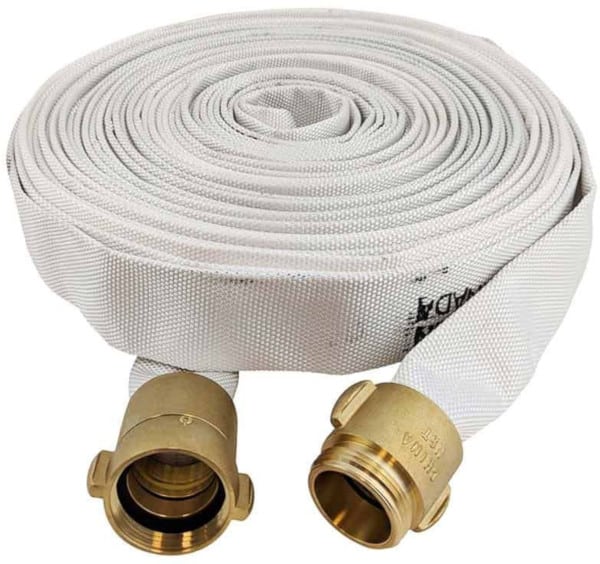
The standpipe systems of the future will have even fewer fire hose racks and reels
The ICC has slowly rolled back requirements for both Class II and Class III standpipe systems. Building owners’ failure to maintain hoses, employers’ “sporadic” training of employees on hose use, and the increasing presence of fire sprinkler systems in structures make the use of these hoses less necessary and potentially hazardous.
In recent years, the International Code Council (ICC) has provided fire officials with new guidance on the removal of occupant-use hose lines. The 2018 edition of the International Fire Code (IFC) allowed fire code officials to remove hose stations’ fire hoses if both of the following conditions are true:
- The hose line won’t be used by trained staff or firefighters
- The included hose outlets are compatible with the local fire department’s hoses
Additionally, NFPA 1: Fire Code authorizes local fire code officials to remove existing occupant-use hoses when all of the following conditions are met:
- NFPA 1 or current building codes don’t require their installation
- The authority having jurisdiction (AHJ) determines that the hose won’t be used by trained personnel or the fire department
These model code provisions, as adopted by governments, may be implemented in slightly different ways. The San Jose Fire Department, for example, requires that building owners apply for a permit before removal. Then, they must have their system inspected, tested, and maintained by a licensed contractor.
Note that neither of these standards allows for the removal of other standpipe system components—just the hoses, fire hose reels and racks, and fire hose nozzles. Hose connections are left intact.
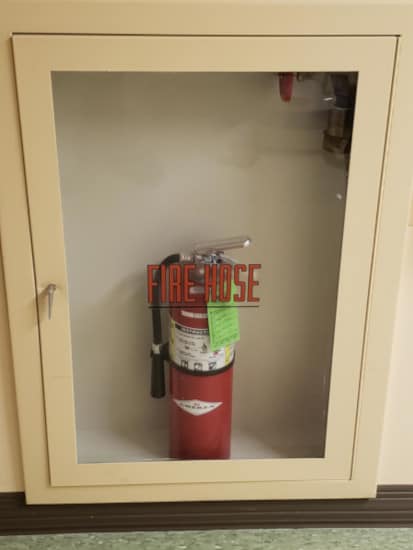
Fire hose racks and fire hose reels still have a place in settings where they’re needed and can be safely used
Rather than encouraging some trained occupants to contain fires in their early stages—as is already done with fire extinguishers—today’s fire officials would rather ensure that evacuation takes place as quickly and safely as possible. While that’s good as a general rule, there are still some uses for hose stations.
First, while building owners can remove these systems, there’s no mandate to do so. In some jurisdictions—particularly those that haven’t updated their fire codes in some time—occupant-use hoses may be required. Second, even when removal is an option, hose stations may still be useful. A well-trained on-site fire brigade can use hose stations to safely extinguish fires while the rest of a building’s occupants evacuate. And when hot work is a common occurrence or occurs alongside fire sprinkler system impairment, fire hose racks and reels can provide a useful supplement to other fire protection measures.
Finally, local fire departments may use 1 1/2” hose connections to supplement more robust firefighting efforts. Smaller hose sizes minimize water discharge—meaning that firefighters can soak mostly extinguished fires and clean up the debris while reducing water damage.
Be sure to read The Code Coach’s take on standpipes, and check out and bookmark the main site for detailed info on codes, standards, and recommended practices—from ICC, NFPA, and more—in a range of fire protection systems.
If you’d like to repair or replace an existing hose station, look at our selection of components and accessories, including:
- Listed fire hose racks or fire hose reels and hoses
- Fire hose adapters
- Hose valves and reducers
- Fire hose nozzles
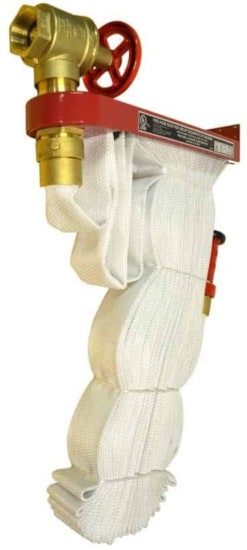
Browse our fire hose racks and fire hose reels for standpipe and hose systems.
Questions? Call us at +1 (888) 361-6662 or email support@qrfs.com.
This blog was originally posted at blog.qrfs.com. If this article helped you, check us out at Facebook.com/QuickResponseFireSupply or on Twitter @QuickResponseFS.


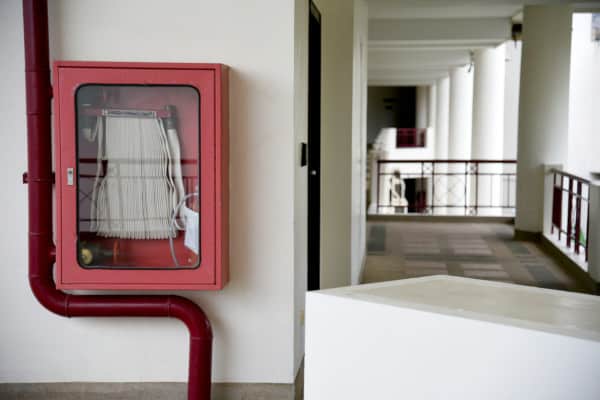
It’s a life-saving equipment. Very helpful.
Dear sirs
I deal with seven wheat silos diameter 8,5 m and height 30 m each.
which type of standpipe class system (I, II, III) should i use. Should i install fire reel cabinets on the catwalk of the silos?
Thank you
Kostas, thanks for reaching out. For code questions like this, we recommend submitting your question through QRFS Ask A Pro. Click the link to submit your question with some information about your building or system, and a fire protection professional will provide a detailed answer based on standards and codes. Our pros include AHJs, contractors, engineers, and code experts with 150+ years of combined experience!
These are a complete waste of time and Money.
Anyone that is investing time and money into these would be much better served by a Full Sprinkler System, Designed correctly with an adequate water supply.
Having inspected 1000s of Buildings across the US, if there is hose (most of the time removed without local AHJ approval), the hose is mothballed and could not hold any pressure.
Further with todays fires, fighting a fire with the exposure to the crazy amount of toxic smoke that is not discussed here, if your using a hose based water suppression to fight the fire. If you survive the toxic inhalation I would be surprised.
I have and will continue to push that these standpipe systems been removed from buildings. If you cant put the fire out with a small fire extinguisher, the priority should be the evacuation of the building, having Fire Department personnel fight the fire.
Unless we are going to start putting full fire gear with SCBA with these hose systems, they should not be used, and any occupant should stay away from them.
I have seen far too many plans that call for the personnel of the building to use these systems. It is far too dangerous for anyone but a properly equipped firefighter.
As a Firefighter, I would never trust a building owner to maintain these systems, I feel safer to bring my own hose, that is tested yearly.
You should get behind safer pratices.
Code inspector — Occupant use hoses are being phased out for the reasons you mention above, but these systems still exist and must be maintained—and not every building owner has the funds to retrofit a different system. Often, these are modified so that only firefighters can access them. As far as trusting the building owner, in the end, it is also the AHJ’s responsibility to ensure the building owner keeps them maintained and up to code. Thanks for your comment!
Hello QRFS,
Very informative article. Our local fire department has asked us to design a class 2 system as per NFPA 14 with 1″ diameter hose reels. NFPA requires 100gpm from the hose stations at 65psi but a typical 1″ hose may only be able to provide 25-30gpm. Did I miss something in the article or the code addressing this seemingly logical question?
Thanks
Thanks for reaching out. For code or standards and system application questions like this, we recommend submitting your question through QRFS Ask A Fire Pro. Click the link to submit your question with some information about your building or system, and a fire protection professional will provide a detailed answer based on standards and codes. Our pros include AHJs, contractors, engineers, and code experts with 150+ years of combined experience!
What will be the minimum and maximum gap should provide between fire hose reel cabinet and fire hydrant in a landscape area
Rajesh — for system application and code questions like this, you can try our Ask a Fire Pro service. Click the link to submit your question with some information about your building or system, and a fire protection professional will provide an answer based on standards and codes. Our pros include AHJs, contractors, engineers, and code experts with 150+ years of combined experience!
When our Class II stations had hoses removed, our service company installed non-threaded rubber caps to protect the connection. 10+ years later, a different service tech from the same company says the caps must be threaded, but can’t seem to point out this threaded cap requirement in code. Are threaded caps required by code (what paragraph)? I don’t see this mentioned in your article. Thanks!
Henry — The service tech is referencing this section from NFPA 14: Standard for the Installation of Standpipe and Hose Systems (2019):
Commentary: “Threaded caps may be brass or impact-resistant plastic.”
Hope that helps, and thanks for reading!
Should i test hose reel flow length in accordance with NFPA
Andrew — We aren’t sure what you mean by “test” hose reel flow length. These hoses must be within certain distances, many of which are specified in the blog above. Please clarify your question, if you get a chance. Thanks!
hi;
what is the distance between fire hose reels to be installed in a building canteen;
may 6 or seven hose reels to be installed.
is NFPA have set distances between hose reels; what articale.
thanks
Suleman — The answer to questions like these depends on individual factors (including the class of standpipe system and any locally applicable laws/codes). However, the distance between hose stations in Class II standpipe systems is covered in the article above under the reference 7.3 in the 2019 edition of NFPA 14, and repeated below—it moved to chapter 9 in the latest edition of NFPA 14:
Please consult a qualified local fire protection pro to assess your building and system. Thanks for reading.
If a building is fully sprinklered can the Fire Hose system be removed?
A Carras — We don’t know the specifics regarding your building, which influences whether it needs a standipe system (the system that supplies firefighter hose connections and/or onsite hoses within a building). However, occupant-use hoses have become less common and accepted, so NFPA 14, as mentioned above, outlines conditions where the onsite hose stations with hoses can be replaced with onsite hose connections that professional firefighters may use:
Removing the entire standpipe system would be another, quite unlikely, situation. Thanks for reading.